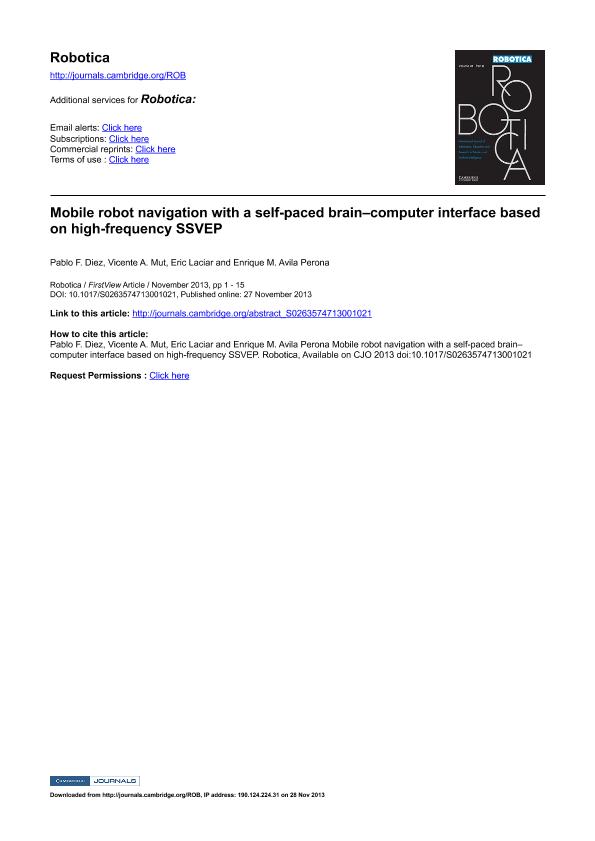Artículo
Mobile robot navigation with a self-paced brain–computer interface based on high-frequency SSVEP
Fecha de publicación:
11/2013
Editorial:
Cambridge University Press
Revista:
Robotica
ISSN:
0263-5747
Idioma:
Inglés
Tipo de recurso:
Artículo publicado
Clasificación temática:
Resumen
A brain–computer interface (BCI) is a system for commanding a device by means of brain signals without having to move any muscle. One kind of BCI is based on Steady-State Visual Evoked Potentials (SSVEP), which are evoked visual cortex responses elicited by a twinkling light source. Stimuli can produce visual fatigue; however, it has been well established that high-frequency SSVEP (>30 Hz) does not. In this paper, a mobile robot is remotely navigated into an office environment by means of an asynchronous high-frequency SSVEP-based BCI along with the image of a video camera. This BCI uses only three electroencephalographic channels and a simple processing signal method. The robot velocity control and the avoidance obstacle algorithms are also herein described. Seven volunteers were able to drive the mobile robot towards two different places. They had to evade desks and shelves, pass through a doorway and navigate in a corridor. The system was designed so as to allow the subject to move about without restrictions, since he/she had full robot movement's control. It was concluded that the developed system allows for remote mobile robot navigation in real indoor environments using brain signals. The proposed system is easy to use and does not require any special training. The user's visual fatigue is reduced because high-frequency stimulation is employed and, furthermore, the user gazes at the stimulus only when a command must be sent to the robot.
Archivos asociados
Licencia
Identificadores
Colecciones
Articulos(CCT - SAN JUAN)
Articulos de CENTRO CIENTIFICO TECNOLOGICO CONICET - SAN JUAN
Articulos de CENTRO CIENTIFICO TECNOLOGICO CONICET - SAN JUAN
Articulos(SEDE CENTRAL)
Articulos de SEDE CENTRAL
Articulos de SEDE CENTRAL
Citación
Diez, Pablo Federico; Mut, Vicente Antonio; Laciar Leber, Eric; Avila Perona, Enrique Mario; Mobile robot navigation with a self-paced brain–computer interface based on high-frequency SSVEP; Cambridge University Press; Robotica; 32; 5; 11-2013; 695-709
Compartir
Altmétricas




